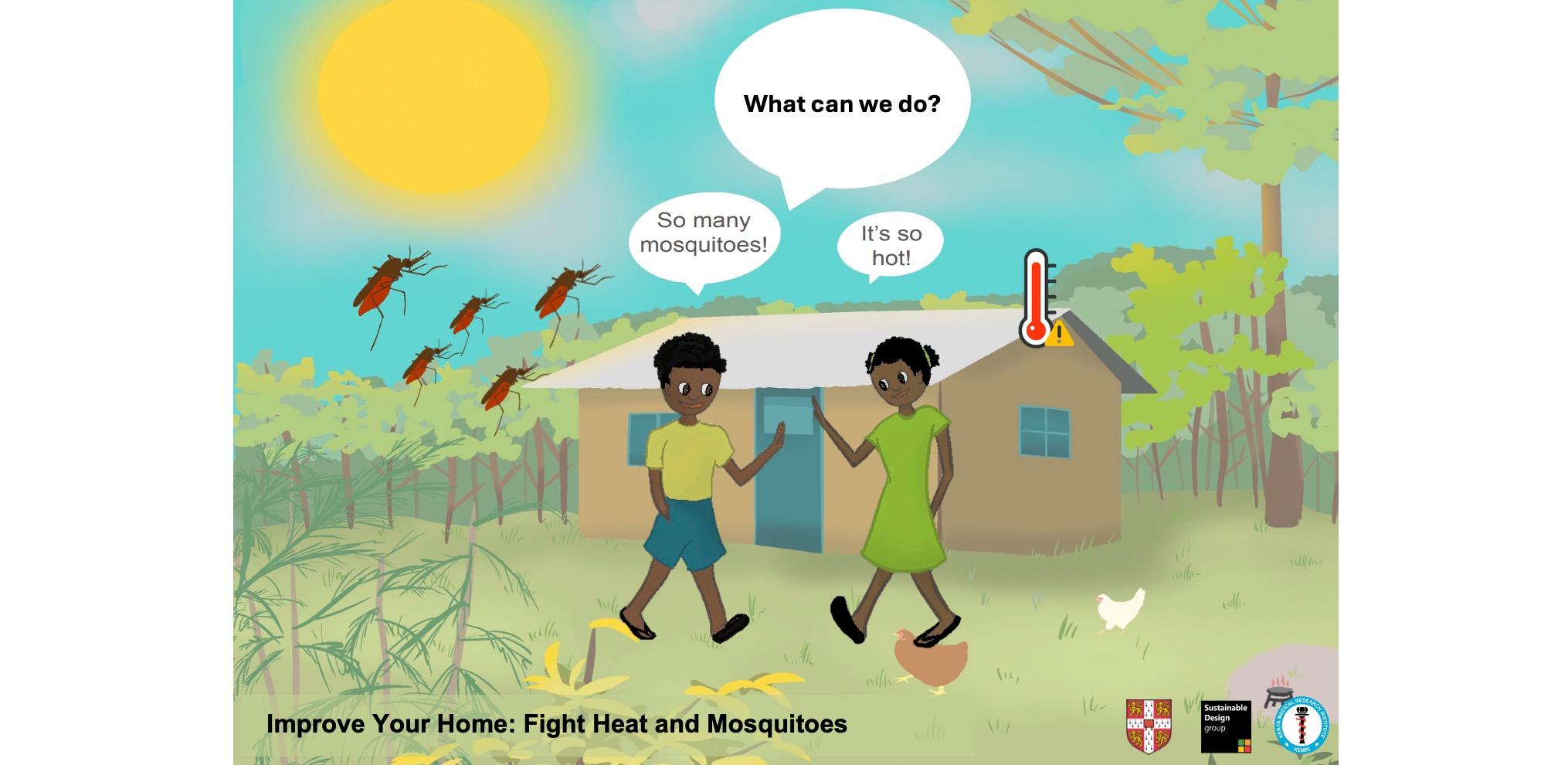
Housing design to reduce Overheating and Malaria risk in indoor Environments
HOME studies the dual burden of malaria risks and heat stress risks in low-income homes in Kenya post malaria prevention intervention implementation.
The detailed objectives of the study are:
- Understand the current mosquito-prevention house modification practices, available and acceptable technologies, domestic socio-cultural practices (like cooking fuel, duration etc), and the heat stress experienced by the residents of low-income houses through community workshops.
- Determine the magnitude of indoor heat stress due to the house modifications for mosquito prevention building simulation.
- Propose optimised and acceptable house designs and modifications to reduce indoor heat stress and mosquito entry in low-income rural housing.
- Develop an integrated evidence-based design guideline to inform the policy makers, NGOs and local residents for improved living standards.
Team
| Principal investigator | Dr Ronita Bardhan, University of Cambridge, UK | |
| Co Investigator | Professor Carol Brayne, Cambridge Public Health | |
| Collaborator | Dr Bernard Abong’o, Kenya Medical Research Institute, CGHR, Kenya | |
| Researcher Assistant | Haiwei Li, University of Cambridge, UK | |
| Researcher Assistant | Dr Haima Raman, University of Cambridge, UK | |
| Project Administrator | Mutsuko Grant |
Publications
- Li, H., Raman, H., Abongo, B., Bange, T., Zhao, Y., Brayne, C., Bardhan, R., (2025). Mosquito prevention strategies
can improve indoor heat stress in hot climates: A case of traditional Kenyan homes. 3 035004 https://doi.org/10.1088/2752-5309/adedab


